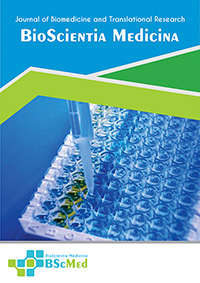Main Article Content
Abstract
Background: The direct antiglobulin test (DAT) is a crucial diagnostic tool in immunohematology, used to detect the presence of antibodies and/or complement components on the surface of red blood cells. DAT positivity is frequently associated with autoimmune hemolytic anemia (AIHA) and other immune-mediated hemolytic conditions. This study aimed to investigate the clinical significance of DAT positivity by comparing the characteristics of patients with IgG, C3d, and IgG/C3d-positive results.
Methods: A retrospective study was conducted on 55 patients with DAT-positive results, identified from the Blood Transfusion Unit of Dr. M. Djamil General Hospital Padang between June 2023 and August 2023. DAT-positive samples were further analyzed using monospecific anti-human globulin (AHG) reagents to determine the presence of IgG, C3d, or both on the red blood cells. Patient demographics, clinical diagnoses, blood groups, transfusion history, and hematological parameters were collected and analyzed.
Results: Out of the 55 DAT-positive patients, 51 (92.7%) were positive for IgG alone, 3 (5.5%) were positive for both IgG and C3d, and only 1 (1.8%) was positive for C3d alone. The majority of patients were adults (>18 years old) and female. A history of blood transfusion (>3 times) was common, particularly in the IgG-positive group. Hematological parameters indicative of hemolysis (hemoglobin ≤9 g/dL, reticulocyte count >2%, and total bilirubin >2 mg/dL) were observed in a significant proportion of patients, especially those with IgG and/or C3d positivity.
Conclusion: IgG positivity was the most common finding in DAT-positive patients, highlighting the prevalence of warm AIHA. The presence of C3d, alone or with IgG, suggests the involvement of complement activation and may indicate a different underlying pathology. This study emphasizes the importance of using monospecific AHG reagents to characterize DAT-positive results, as this information can aid in the diagnosis, management, and prediction of clinical outcomes.
Keywords
Article Details
As our aim is to disseminate original research article, hence the publishing right is a necessary one. The publishing right is needed in order to reach the agreement between the author and publisher. As the journal is fully open access, the authors will sign an exclusive license agreement.
The authors have the right to:
- Share their article in the same ways permitted to third parties under the relevant user license.
- Retain copyright, patent, trademark and other intellectual property rights including research data.
- Proper attribution and credit for the published work.
For the open access article, the publisher is granted to the following right.
- The non-exclusive right to publish the article and grant right to others.
- For the published article, the publisher applied for the Creative Commons Attribution-NonCommercial-ShareAlike 4.0 International License.





